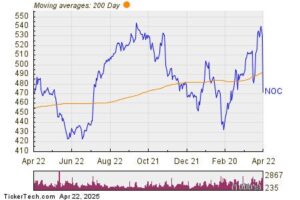Despite uncertainty in the stock markets and fear of a possible recession, Biz2Credit’s monthly Small Business Earnings Report for February 2025, found that average monthly earnings rose nearly $5,000 last month to $37,100.
The earnings increase resulted from a steeper decline in expenses compared to the decline in revenues last month.
The Small Business Earnings Report summarizes primary data of companies that applied for funding each month. It assesses the financial health of small businesses by analyzing primary data provided directly by small to midsized firms in the U.S. as part of the application process on Biz2Credit’s award-winning digital funding platform.
Key Findings About Small Business Earnings (Feb. 2025)
Average Monthly Earnings: $37,100. (Jan. 2025: $32,300 – a nearly $5,000 increase)
Average Monthly Revenue: $627,900. (Jan. 2025: $758,100 – a decrease of $130,200)
Average Monthly Expenses: $590,800. (Jan. 2025: $725,800 – a $135,000 decrease)
A year ago, average revenues were $651,500 and average expenses were $586,700. Average earnings were $64,800, a figure that is $27,700 more than the average earnings in February 2025.
While the price of eggs has become something of a bellwether, other costs, including fuel costs, are a better indicator of prices. The Consumer Price Index (CPI) indicated a 2.8% rise in prices over the 12 months ending in February 2025. While this figure is still above the Federal Reserve’s target interest rate of 2%, it is lower that February 2024’s rate of 3.2% and less than half the figure of 2023, when the CPI was 6%.
Fuel prices impact many aspects of a small company’s operations. Heating costs are reduced, as are delivery costs. Inventory costs can also decline if shipping costs go down.
On average, the prices of goods and services have continued to climb, albeit at a slower pace compared to previous years. Some businesses have been able to pass along their higher costs to consumers, while others are not able to do so. Many will look to pass along the cost of Trump’s tariffs on imported goods and parts.
Related: Will Donald Trump’s Proposed Tariffs Help Or Hurt Small Businesses?
In order to increase earnings, business owners will look for ways to lower their cost structures. Here are some examples:
Four Easy Ways Small Businesses Can Cut Costs
1. Digitization: Going paperless can reduce printing and mailing costs. Utilizing digital invoicing and using digital contracts through services such as Docusign can help reduce costs. Similarly, technology enables employees to work remotely. If they can maintain productivity, you could conceivably reduce the number of workers who need to be on-site, depending on the type of business you are in.
2. Reducing Full-Time Office Staff: Freelancers and other contract workers cost small businesses a lot less money than hiring full-time, salaried employees whose benefits you have to pay. If you allow staff to work remotely, it might be possible to move to a smaller, less costly space than the one you are in now.
3. Negotiating with Vendors: Approach vendors and ask for bulk discounts (if your business has available storage space), pre-payment discounts, and other price breaks. If current vendors are inflexible, look for more affordable suppliers who can offer lower costs without sacrificing quality.
4. Cutting Financial Costs: Interest rates have been slowly and steadily declining. While the Federal Reserve’s Federal Open Market Committee (FOMC) voted not to cut rates in March, there is a possibility that the central bank will lower its base federal funds rate ate least one more time this year. Small business loans are often variable rate loans that will automatically result in lower costs of debt. Business owners who have fixed rate loans can also take advantage the opportunity by refinancing or consolidating debt.
If you have held back on investing in the growth of your company while interest rates have been higher the past few years, be ready to move quickly once they go down again.
Related: 3 Takeaways For Small Business From The Fed’s Interest Rate Decision
The other factor in earnings, naturally, are revenue figures.
Five Ways Small Business Owners Can Boost Revenues
1. Increase Sales to Existing Customers: Often the best way to increase revenue is to generate more sales from existing companies.
Upselling is a common way to increase sales from current customers. We all familiar with upselling at fast food restaurants when the counter person asks: “Would you like fries with that?” It’s an obvious ploy to get customers to spend more. If chain restaurants can do it, so can smaller eateries. Nail salons can run specials for customers who come in for both manicures and pedicures. Car washes upsell waxing and detailing services. They key is to come up with an offer enticing enough to get customers to spend more money than perhaps they planned to.
Loyalty Programs encourage repeat customers by offering rewards for frequent patronage, such as “buy 10 pizzas and get one free” or special discounts and/or exclusive deals that are only available to loyalty program members. Incentives like these will keep customers coming back for more.
2. Attract New Customers: Utilize 21st century marketing methods to widen exposure online by being active on digital media. TikTok recently launched a TV campaign that highlights companies that started small and grew incrementally thanks to the online video platform. Brands like The Silk Labs (hair accessories) and Street Brew Coffee have grown incrementally with help from TikTok. According to JoinBrands.com, the most successful companies on the platform understand their audiences, create engaging content, leverage hashtags and trends, collaborate with influencers, and post consistently.
Other social media channels, including Facebook, provide a cost-effective vehicle for running targeted ads. Smart marketers also utilize email marketing effectively by sending out promotional emails, coupons, and other offers.
3. Raise Prices Wisely: This is Economics 101. If your product is inelastic, meaning that people will keep buying it regardless of cost, there is little risk involved in raising prices. However, most products have a price threshold, so there is always going to be some level of risk of losing sales by upping prices. It is critical to find out the upper spending threshold and not to boost prices too often, which can alienate customers.
4. Expand Product or Service Offerings: Never become stale. Introduce new products and customer care services to expand your revenue base and create buzz in the marketplace to keep your company top-of-mind.
5. Cross-Promote with Other Popular Brands: Co-promotions can provide a halo effect for brands that partner with other companies that produce similar quality products in seemingly unrelated industries. For example, an ice cream shop might promote free cones to fans of a local minor league baseball team if it wins on a certain night. In return, the team might provide tickets to upcoming games that can be raffled off or given away to loyal customers of the ice cream shop.
The U.S. economy has transitioned successfully from the COVID lockdowns and emerged from the high inflation period that soon followed. However, it has not been easy. The dual challenges of sticky inflation and relatively high interest rates hurt the bottom lines of countless small businesses. But when the going gets tough, the tough get going and try to find solutions to generate more revenue, reduce costs, and increase earnings. Entrepreneurs face these challenges every day, and the most successful ones take them head-on and boost their small business earnings.
Read the full article here











